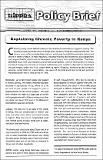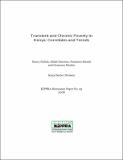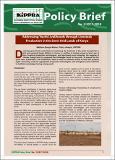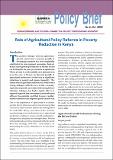| dc.date.accessioned | 2021-05-05T08:14:43Z | |
| dc.date.available | 2021-05-05T08:14:43Z | |
| dc.date.issued | 2007 | |
| dc.identifier.uri | http://repository.kippra.or.ke/handle/123456789/2907 | |
| dc.description | This policy brief is based on various KIPPRA studies under the
Poverty Programme of the Social Sector Division. | en |
| dc.description.abstract | Chronic poverty can be defined in terms of the duration households are trapped in poverty. The
chronically poor are those who are always poor, or usually living below the poverty line. The
chronic poor suffer persistent deprivation, which may be multidimensional in nature and
severe in terms of depth. In most instances, they may not only lack income but also capabilities
such as good health, educational achievement and access to basic social amenities. They have
benefited least from any economic growth and development, and for them poverty is simply
not about having a low income; it is about multidimensional capability deprivation manifested
through hunger, under-nutrition, unsafe drinking water, illiteracy, having no access to health
services, social isolation, exploitation, low levels of material assets and social and political
marginalization over a long period of time. | en |
| dc.language.iso | en | en |
| dc.publisher | The Kenya Institute for Public Policy Research and Analysis | en |
| dc.relation.ispartofseries | Policy brief No.09 of 2007; | |
| dc.subject | Chronic poverty | en |
| dc.subject | Kenya | en |
| dc.subject | Employment creation | en |
| dc.subject | Educational attainment | en |
| dc.subject | Poverty reduction | en |
| dc.title | Policy Brief No. 09 of 2007 on Explaining Chronic Poverty in Kenya | en |
| dc.type | KIPPRA Publications | en |
| ppr.contributor.author | The Kenya Institute for Public Policy Research and Analysis | en |




